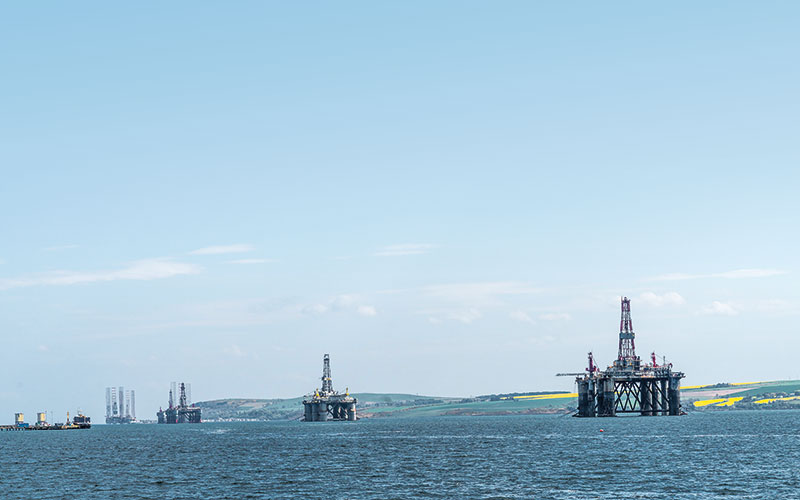New wave of opportunities?
With US$200bn expected to be spent on decommissioning globally during the next 20 years, EIC’s Diveena Danabalan tracks international developments

As decommissioning strategies in the North Sea and the Gulf of Mexico are tweaked for increased efficiency and cost reduction to maximise economic recovery, some regions are only just putting together their decommissioning frameworks. However, one advantage these new markets have is that with careful planning, they can avoid making the same mistakes that more mature markets have made.
New hot spots
Despite limited experience and knowledge in new key markets such as Southeast Asia (expected decommissioning spend of more than US$77bn), Brazil (US$6bn expected to be spent on 18 Petrobras projects by 2024), and the Arabian Gulf (usually carried out within redevelopment projects and therefore difficult to track), the industry is particularly adept at applying global lessons on a situational basis.
Countries such as Australia, Brazil, Brunei, India and Malaysia have been vocal about wanting to engage with the decommissioning expertise of the UK. Petronas, Malaysia’s national oil company, estimates that its spend on decommissioning alone during the next five to 10 years will be around US$2bn.
What does good practice look like?
When planning for the decommissioning of assets, lessons learnt from both the North Sea and Gulf of Mexico apply,with in-region experts able to offer comprehensive insights on planning for the later life of assets into decommissioning. Key points that underpin a successful decommissioning strategy include the need for planning ahead, understanding and controlling the costs associated with the decommissioning of an asset, and engaging clearly and transparently with key stakeholders and the supply chain. Ensuring regulatory compliance, and balancing costs and risks well in advance of cessation of production (CoP), are also crucial.
Collaboration cuts costs
While the life extension of an asset may buy an operator anywhere between one and 10 years of extra production, the extra time can be used for planning and preparation that could save large amounts of money in the future. Unlike other parts of the industry, decommissioning is not a competition, and it pays to co-operate with other operators to reduce costs for all involved.
The cost of well plug and abandonment is estimated to be around 49% of global decommissioning spend. Operators have devised ways to keep the cost of well plug and abandonment down, including abandonment in batch campaigns, vessel sharing between operators, optimising activity schedules, using alternatives to the existing drilling derrick method, and assessing wells using light well intervention vessels before carrying out campaigns.
Lessons learnt from the North Sea
In the North Sea in particular, costs have been driven down not only by the above co-operation strategies, but also by investment in new technologies. Recently, ConocoPhillips cited that it would see significant cost savings by using a through- tree (rigless) process for well plug and abandonment by SPEX, which removes casing and any associated cement back to the formation, allowing the installation of a permanent barrier.
Over time these technologies will become commercial and widely used. Figures put forward by the Oil and Gas Authority (OGA) show that, compared to 2018, there was a more than £6bn reduction in the like-for-like cost estimate for decommissioning in 2019; the largest fall in costs has been for well plug and abandonment.
Fairfield Energy recently announced that costs for the decommissioning of the Dunlin Cluster in the Northern North Sea had been reduced by £31m thanks to a decrease in well plug and abandonment costs. According to the OGA, running costs for platforms in the North Sea have also been reduced by around 40% during the past two years, due to early well abandonment strategies and prompt de-manning post-CoP.
The North Sea is a valuable training ground for the fledgling decommissioning industry
Looking ahead
Decommissioning is an inevitable part of a field’s life cycle, and should be looked at as an opportunity, not a necessary evil. Experts have speculated that, in the future, the decommissioning market will look very different from today. It will continue to be a niche market, as having too many contractors that specialise in decommissioning would eventually stop adding value and turn the sector competitive, with operators that specialise in decommissioning as opposed to operators falling into it on a project-by-project basis. The UK government is also looking into the use of ready-to-be-decommissioned assets as part of future carbon capture and storage projects, such as the in-development Acorn project, and potentially hydrogen storage.
Exporting UK expertise
The North Sea, despite being a valuable training ground for the decommissioning industry, will soon become an overcrowded market. In a report conducted by Accenture in 2018, an assessment of the UK’s supply chain capabilities concluded there were satisfactory capabilities in the UK to meet the sporadic demand generated from North Sea decommissioning. In fact, due to our expertise in subsea, supply chain capacity was deemed surplus to requirements in this area, hence the need for exporting our capabilities. Well plug and abandonment, regardless of well type – i.e. platform or subsea – was also determined to be catered for. In the foreseeable future, the UK supply chain will have to either export or diversify its expertise, or risk losing out on valuable business opportunities.
By Diveena Danabalan, Senior Analyst – Upstream, EIC
Find out more about opportunities in the decommissioning sector with the EIC’s upcoming webinar on Tuesday 26 May.
Image credit | Alamy






Follow us
Advertise
Free e-Newsletter